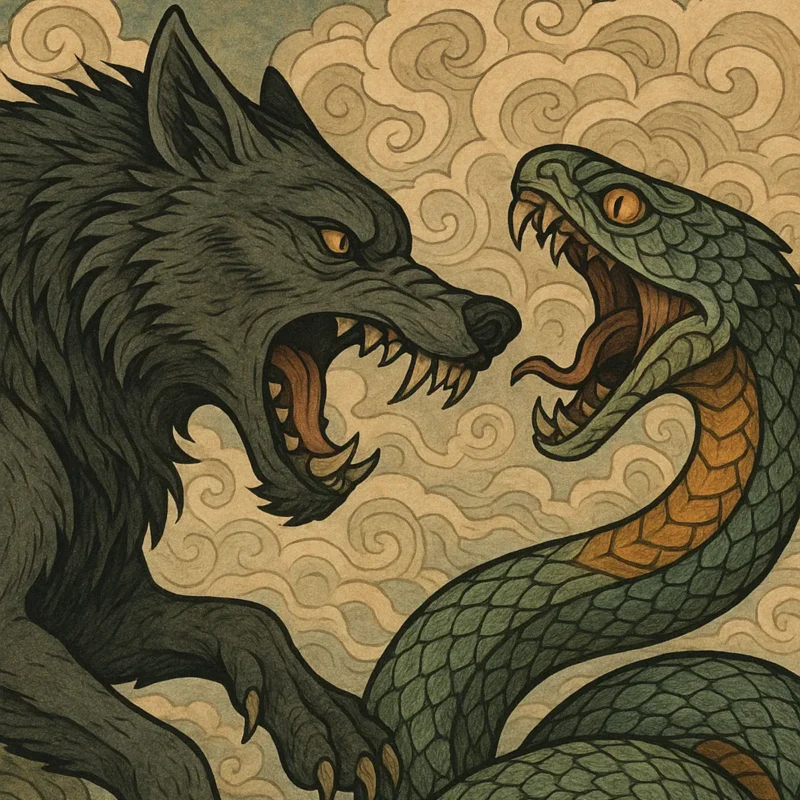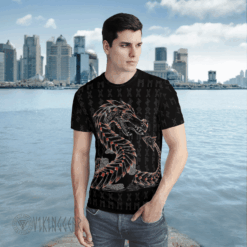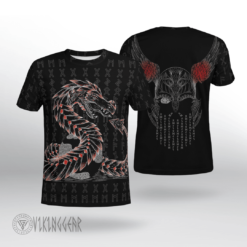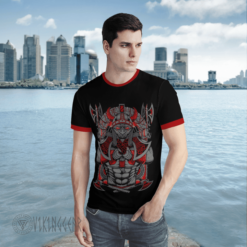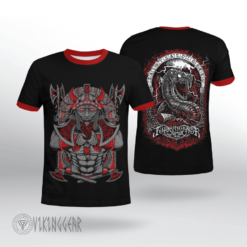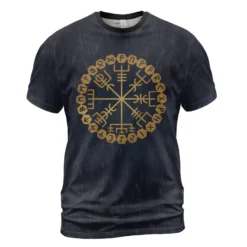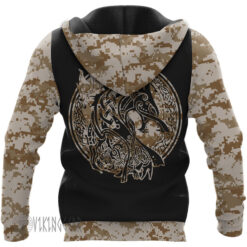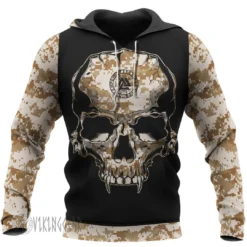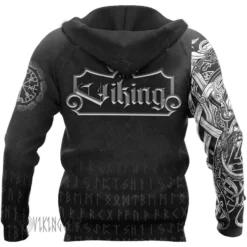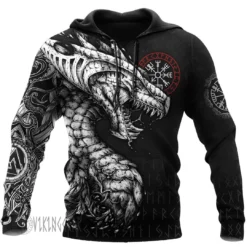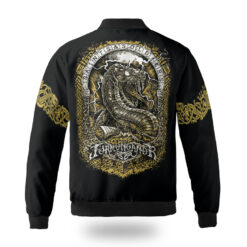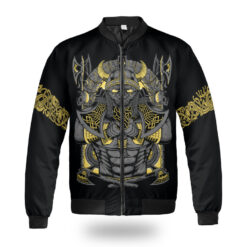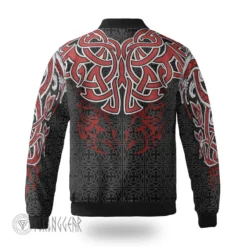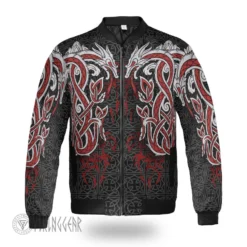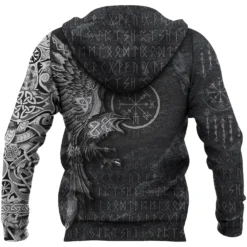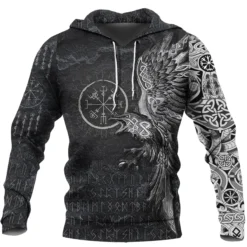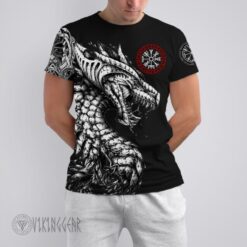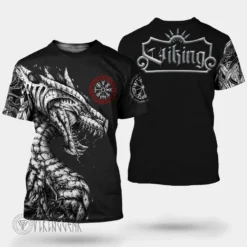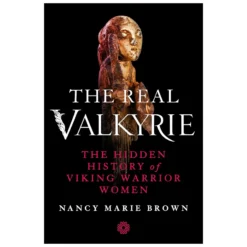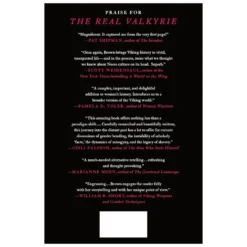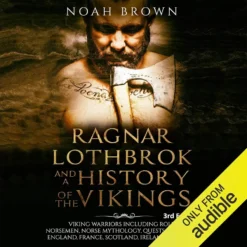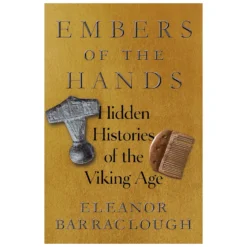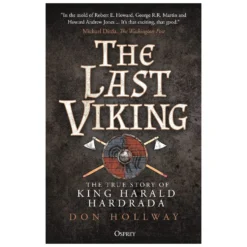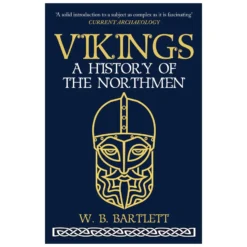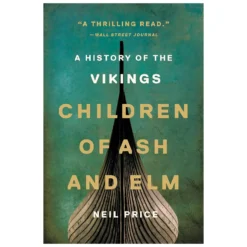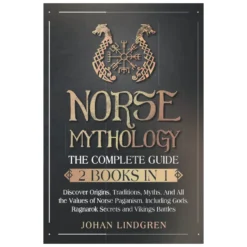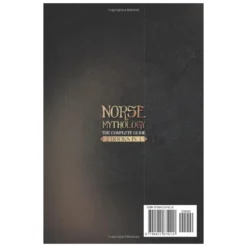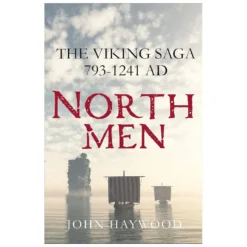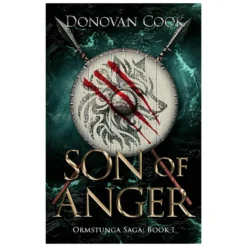Viking Blog
Viking Mythology Monsters: 7 Terrifying Creatures from Norse Legends
Viking legends are more than stories of warriors, gods, and epic journeys. They also include fearsome and mysterious beings. These beings haunted the dreams and fireside tales of the Norse people. These Viking mythology monsters show the chaos, darkness, and wildness that the Norse sought to understand and conquer. Let’s explore the scary world of Viking mythology. Here are seven of the most terrifying creatures from Norse legends.
1. Fenrir – The Monstrous Wolf
No list of Viking mythology monsters is complete without Fenrir. This giant wolf will bring chaos to the world.
- Origins: Fenrir is the child of Loki, the trickster god, and Angrboda, a giantess. He stands for unstoppable destruction.
- Legend: The gods, fearing his power, bound Fenrir with magical chains. Prophecy said he would escape during Ragnarok, the world’s end, and eat Odin, the chief god.
- Symbolism: Fenrir represents chaos, fate, and the wild, untamable aspects of nature.
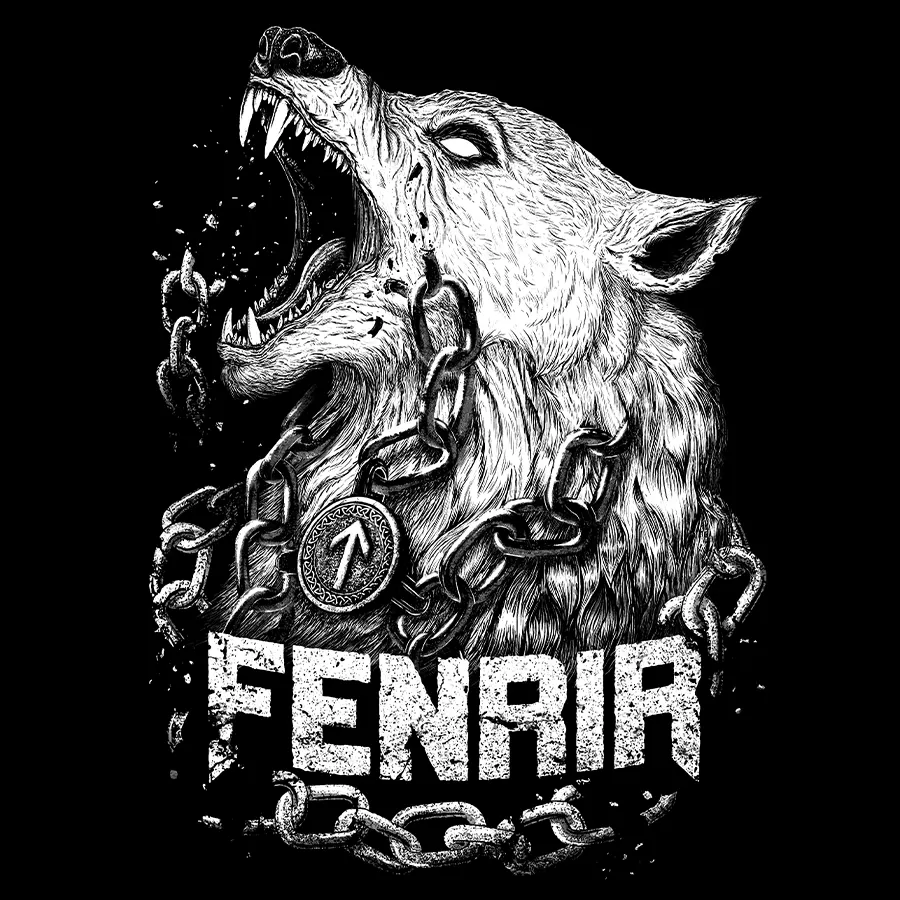
2. Jörmungandr – The World Serpent
Jörmungandr is another monstrous child of Loki. This legendary serpent circles the Earth.
- Myth: Cast into the ocean by Odin, Jörmungandr grew so large that he encircled the entire world, biting his own tail.
- Ragnarok: During the end times, Jörmungandr will emerge from the sea and battle Thor, the thunder god. Both intend to kill each other.
- Symbolism: Jörmungandr represents the cycle of life and death, the unknown depths, and the power of the sea.
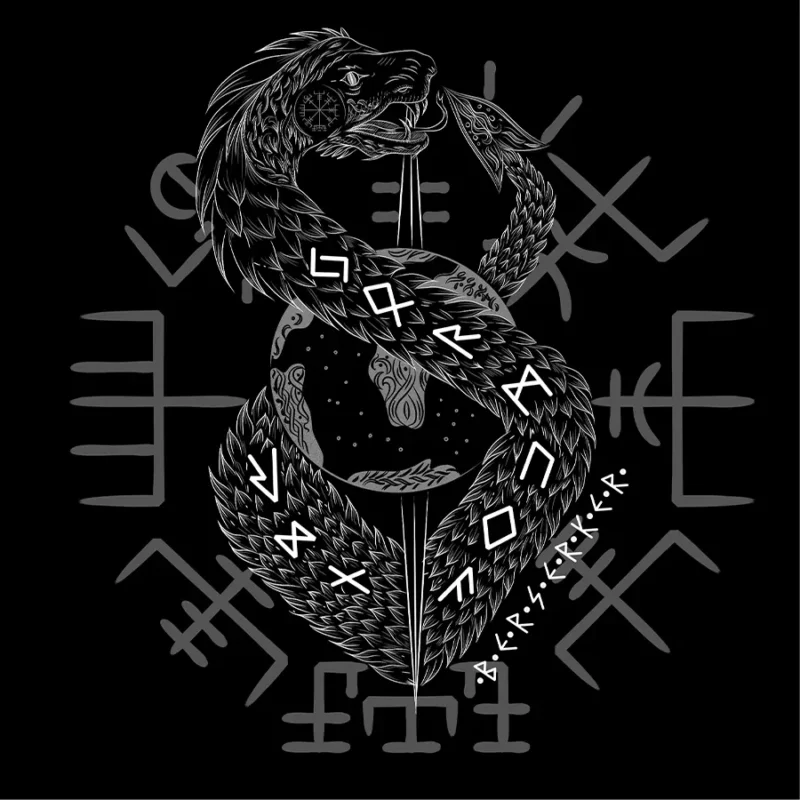
3. Níðhöggr – The Corpse-Eating Dragon
Norse legends tell of Níðhöggr, a dragon (or giant serpent) that gnaws at the roots of Yggdrasill, the World Tree.
- Role: Níðhöggr dwells in the realm of the dead, feasting on corpses and spreading decay.
- Myth: His constant chewing disrupts the cosmic balance. It symbolizes the destructive forces lurking beneath the surface.
- Symbolism: Níðhöggr embodies death, rot, and the constant threat to cosmic order.
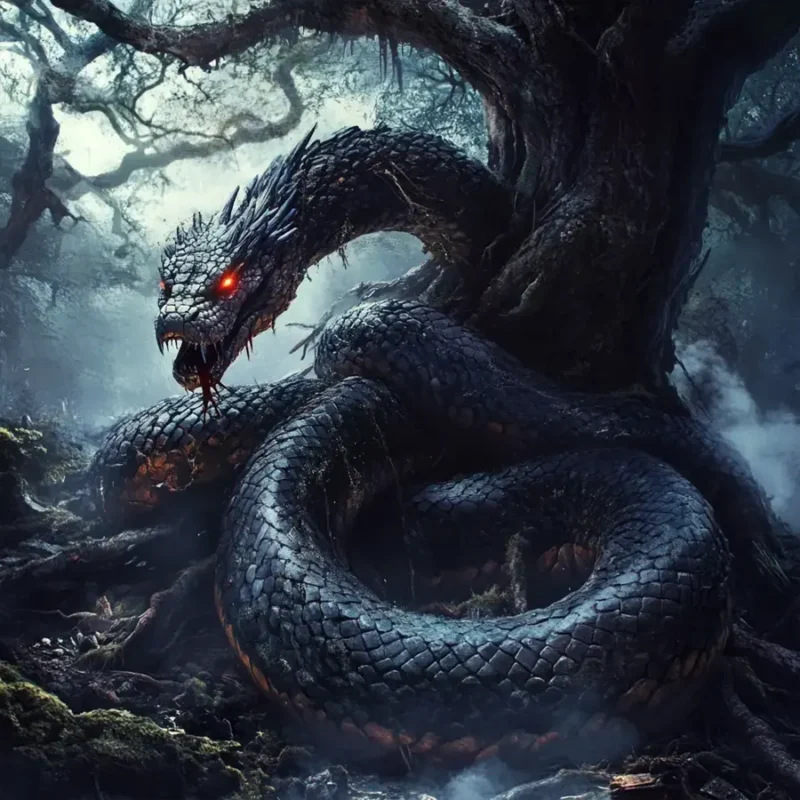
4. Draugr – The Undead Viking
Draugr aren’t your usual zombies. Greed, revenge, or unfinished business from their lives power these undead beings.
- Legends say Draugr can grow larger and have superhuman strength. They often guard treasure in their burial mounds.
- Abilities: They can shape-shift. They can control the weather. They can also enter the dreams of the living.
- Symbolism: Draugr symbolize the fear of restless spirits. They also highlight the need for proper burial and honor in Norse culture.

5. Trolls – Giants of the Wilderness
Trolls are common in Scandinavian folklore. In Viking-era legends, people saw them as dangerous and unpredictable monsters.
- Description: Trolls lived in mountains, forests, and caves. They were often huge, brutish, and hostile to humans.
- Threat: They could crush travelers, steal livestock, and even cast spells.
- Symbolism: Trolls symbolize the wild’s dangers. They capture our fear of the unknown and the threats beyond the safety of civilization.

6. The Kraken – Sea Monster of the North
Though not exclusive to Viking mythology, the Kraken is often tied to Norse sea legends and sagas.
- Legend: This huge sea monster could pull whole ships under the waves with its giant tentacles.
- Fear: Vikings, as master seafarers, both respected and feared the deep, unpredictable ocean.
- Symbolism: The Kraken shows the sea’s mysteries and dangers. Even the bravest can become lost.
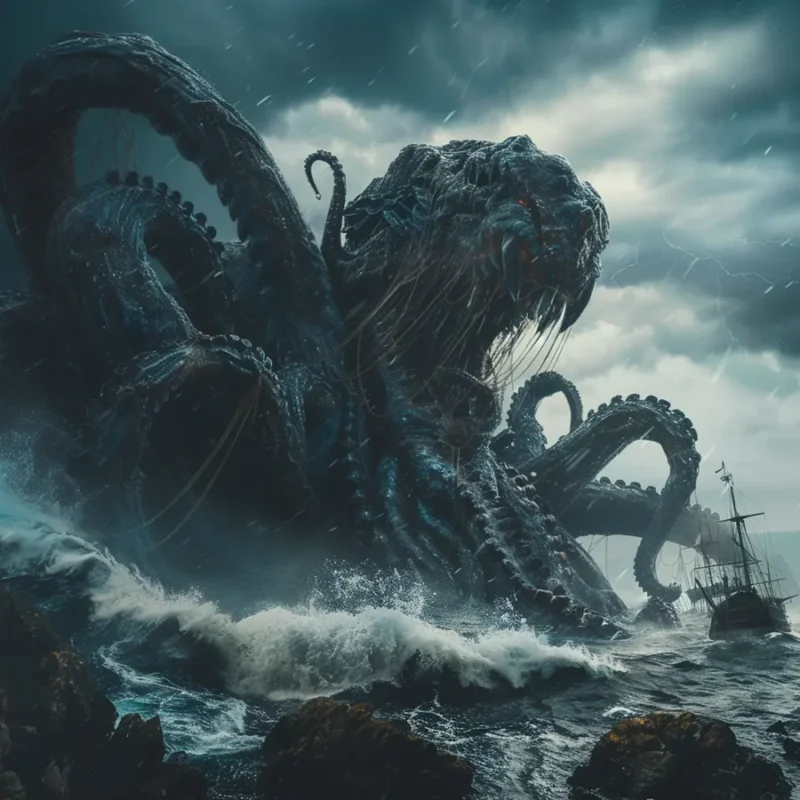
7. Gullinbursti – The Golden Boar
Gullinbursti isn’t always seen as a monster. He is a magical boar with golden bristles made by the dwarves.
- Origin: Made for the god Freyr, Gullinbursti could outrun any horse and shine in the dark.
- Role in Myth: The boar could be both a protector and a threat, depending on its master.
- Symbolism: Gullinbursti symbolizes nature’s duality—its beauty and danger. It also shows the strength of craftsmanship and magic.
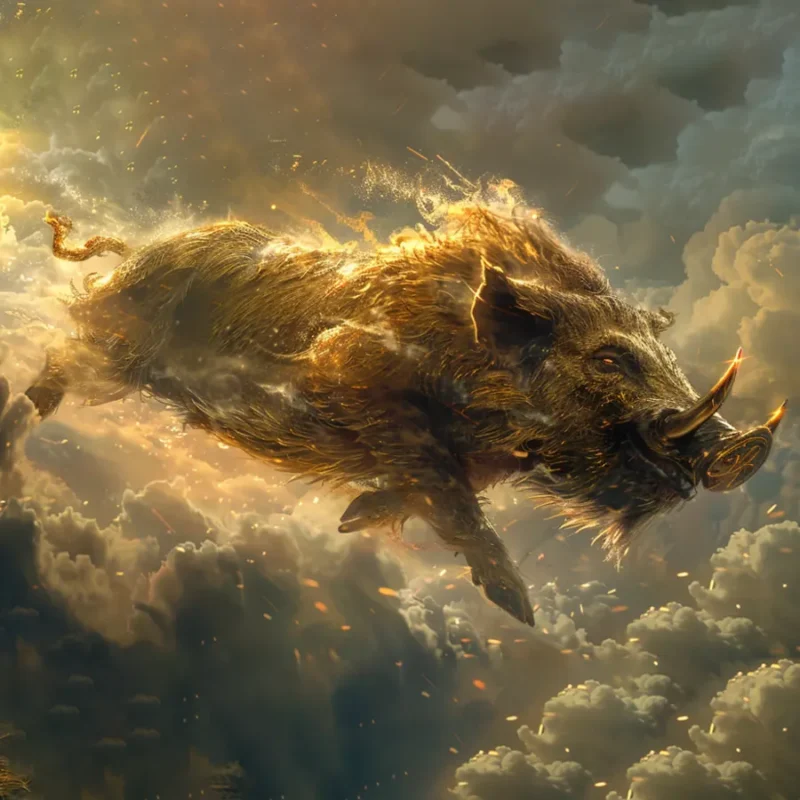
The Lasting Impact of Viking Mythology Monsters
Viking mythology monsters were not scary stories. They helped the Norse understand dangers in their world. These included stormy seas, dark forests, and the mysteries of death. Each creature held a lesson or warning. They reminded the Vikings of nature’s strength and human limits.
These monsters still inspire modern fantasy. They appear in novels, movies, video games, and art. Viking mythology monsters captivate us and keep Norse traditions alive. They remind us that myth and reality can blur.
Conclusion: Facing the Monsters of Norse Legend
Viking mythology features many monsters that still captivate us. There’s the wolf Fenrir, the giant serpent Jörmungandr, and the corpse-eating Níðhöggr. Each one leaves a lasting impression. They push us to confront our deepest fears. We must respect forces we can’t control. Also, we should remember the stories that shaped a legendary time. The spirit of the North lives on in these fierce creatures. They are wild, untamed, and unforgettable.

